Stephanie Bryant
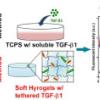 Mesenchymal stem cells (MSCs) hold great promise for vascular smooth muscle regeneration. However, most studies have mainly relied on extended supplementation of sophisticated biochemical regimen to drive MSC differentiation towards vascular smooth
Mesenchymal stem cells (MSCs) hold great promise for vascular smooth muscle regeneration. However, most studies have mainly relied on extended supplementation of sophisticated biochemical regimen to drive MSC differentiation towards vascular smooth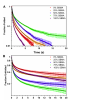 We show that protein unfolding on biomaterials may be dramatically reduced via tuning the chemical heterogeneity of the protein–material interface. Specifically, using dynamic single-molecule methods, we confirmed that the transient structure and
We show that protein unfolding on biomaterials may be dramatically reduced via tuning the chemical heterogeneity of the protein–material interface. Specifically, using dynamic single-molecule methods, we confirmed that the transient structure and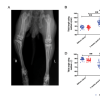 Physeal injuries can lead to bony repair tissue formation, known as a bony bar. This can result in growth arrest or angular deformity, which is devastating for children that have not yet reached their full height. Current clinical treatment involves
Physeal injuries can lead to bony repair tissue formation, known as a bony bar. This can result in growth arrest or angular deformity, which is devastating for children that have not yet reached their full height. Current clinical treatment involves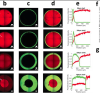 A rapid and facile approach to predictably control integration between two materials with divergent properties is introduced. Programmed integration between photopolymerizable soft and stiff hydrogels is investigated due to their promise in
A rapid and facile approach to predictably control integration between two materials with divergent properties is introduced. Programmed integration between photopolymerizable soft and stiff hydrogels is investigated due to their promise in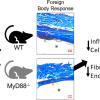 Synthetic hydrogels, such as poly(ethylene glycol) (PEG), are promising for a range of in vivo applications. However, like all non-biological biomaterials, synthetic hydrogels including PEG elicit a foreign body response (FBR). The FBR is
Synthetic hydrogels, such as poly(ethylene glycol) (PEG), are promising for a range of in vivo applications. However, like all non-biological biomaterials, synthetic hydrogels including PEG elicit a foreign body response (FBR). The FBR is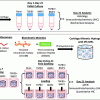 Human induced pluripotent stem cells (iPSCs) have emerged as a promising alternative to bone-marrow derived mesenchymal stem/stromal cells for cartilage tissue engineering. However, the effect of biochemical and mechanical cues on iPSC
Human induced pluripotent stem cells (iPSCs) have emerged as a promising alternative to bone-marrow derived mesenchymal stem/stromal cells for cartilage tissue engineering. However, the effect of biochemical and mechanical cues on iPSC

